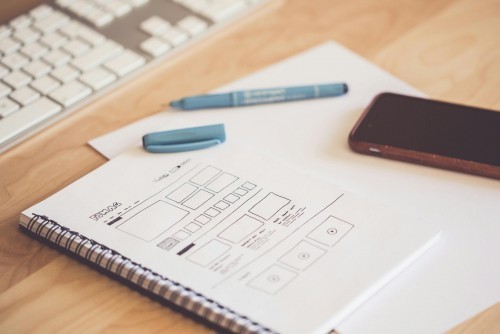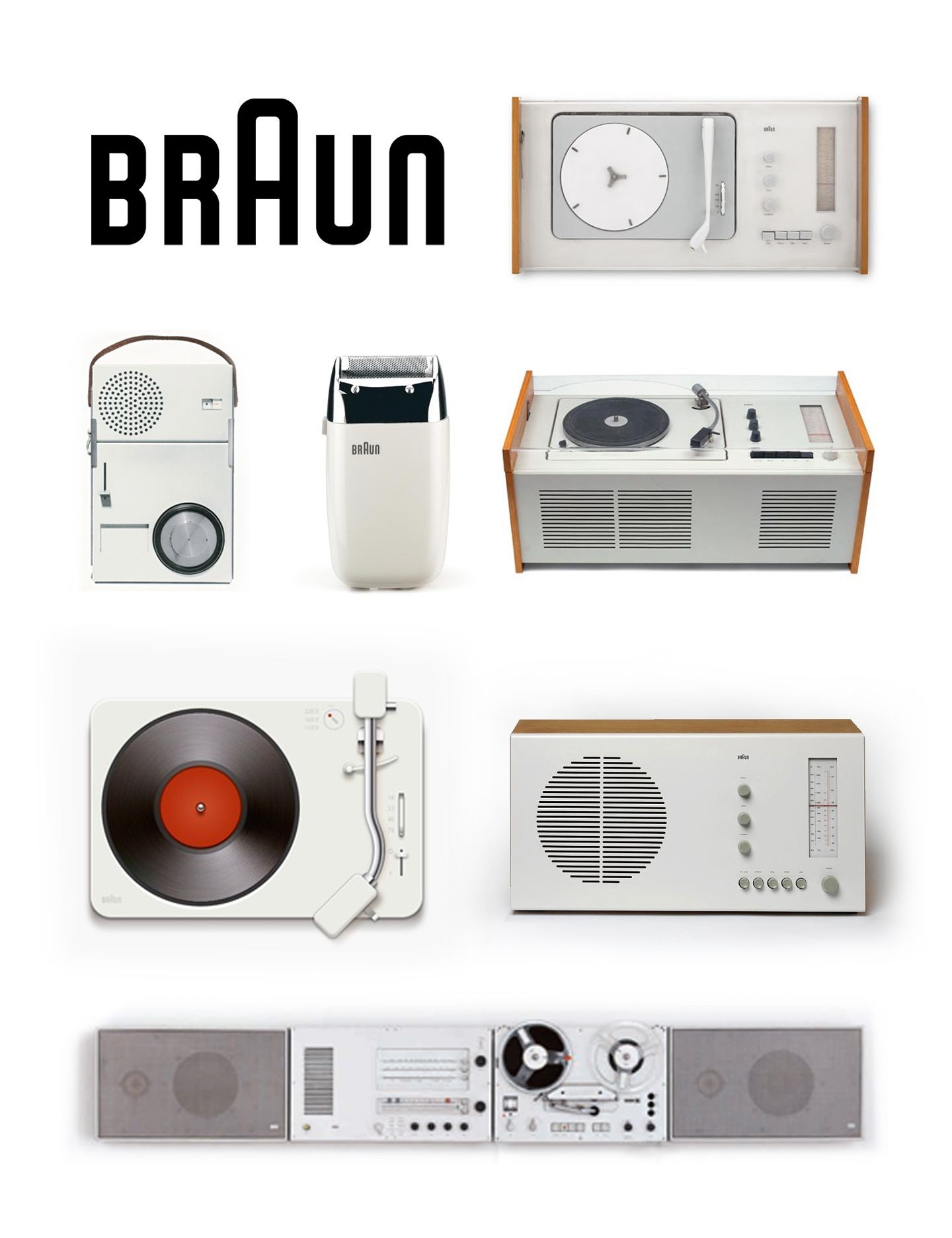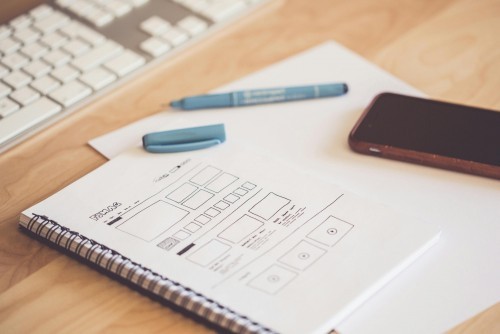
Principles of good design
„Perfection is achieved, not when there is nothing more to add, but when there is nothing left to take away”
– Antoine de Saint-Exupéry
About Dieter Rams, who gave design a conscience
In order to create good design, it is important to be aware of its rules, which we can safely say was best summed up by Dieter Rams.
Rams is a German industrial functionalist designer, designer of the Braun company. Due to his restraint and the "less is better" principle, his products have achieved a timeless quality.
Dieter Rams summarized the rules of good design in 10 points:
1. Innovative: It takes the world forward, shows something new and gives something new.
2. Useful: It helps people and is not selfish.
3. Aesthetic: The sight of it is pleasing to the eye, it is made of quality materials and colors.
4. Self-explanatory: User-friendly, understandable for anyone even without an explanation or user guide.
5. Low-key: A well-made product is not in the crossfire of controversy, unless it was intended to be.
“Simplicity is not the absence of clutter, that’s a consequence of simplicity. Simplicity is somehow essentially describing the purpose and place of an object and product. The absence of clutter is just a clutter-free product. That’s not simple.”
– Jony Ives
6. Honest: It does not manipulate anyone with unfulfilled promises but tells the truth.
7. Timeless: Refrains from being trendy, so it will never be out of date. It doesn't just imitate passing trends.
8. Perfect down to the smallest detail: The details of the creation are in harmony with each other.
9. Environmentally friendly: Recyclable, not of animal origin, saves resources.
10. Minimal design: Good design is as minimal as possible, because "less is sometimes more". The products cannot be loaded with irrelevant or unnecessary elements, they must be clean.

At first, it may seem that these points are more about products that can be bought in the store, for example, but in fact they are also true for websites, which can also be considered digital products, or they can also apply to the image of a company, but they are also true and can be applied in all areas of our lives.
There can be a huge gap between "good" and "getting used to"
It is also important to mention Tony Fadell briefly when talking about the rules of design. Fadell works at Apple; engineer, innovator, designer and entrepreneur. He is the Senior Vice President of Apple Inc.'s iPod division, he co-invented the iPod with Dieter Rams and also designed iPhones. Tony Fadell also follows the principles of Dieter Rams, but perhaps he thought them further.
Fadell believes that people get used to anything very easily and quickly, so we easily get used to a disturbing thing, which we don't even notice after a while. However, Fadell encourages us to see these problems and fix them, to think of new solutions and ideas.
For example, back in the day, the driver could clear the snow from the windows of trams by opening the windows and reaching out to clean them. However, until then the passengers were cold on the tram, but they got used to it and it seemed normal to them. While cleaning such snow, Mary Anderson began to think about the tram, how this problem could be eliminated, so she invented the windshield wiper. People no longer got cold on the tram, and the tram driver's job became easier as a result of this development.
Tony Fadell encourages us to ask ourselves questions such as:
How can we make something better? Is something really important, or are we just used to it?
Is it possible to get rid of a useless item to make it easier to handle?
Often the simplest childish thoughts are the best ones that move the world forward. For example, Tony asked his young son to check the mailbox for mail, and his son asked, "Why doesn't the mailbox tell me when there is mail?" Such small things make our lives simpler, save us time, improve our quality of life and give us comfort.
These thoughts are also true for the websites that we visit every day. We like to return to a website that meets our needs, can show us something new, satisfies what we are looking for, and is also aesthetically and visually appealing to our eyes.
On the subject of design, we also recommend the following articles for your attention:
Let's learn web display from the printers!

Principles of good design
„Perfection is achieved, not when there is nothing more to add, but when there is nothing left to take away”
– Antoine de Saint-Exupéry
About Dieter Rams, who gave design a conscience
In order to create good design, it is important to be aware of its rules, which we can safely say was best summed up by Dieter Rams.
Rams is a German industrial functionalist designer, designer of the Braun company. Due to his restraint and the "less is better" principle, his products have achieved a timeless quality.
Dieter Rams summarized the rules of good design in 10 points:
1. Innovative: It takes the world forward, shows something new and gives something new.
2. Useful: It helps people and is not selfish.
3. Aesthetic: The sight of it is pleasing to the eye, it is made of quality materials and colors.
4. Self-explanatory: User-friendly, understandable for anyone even without an explanation or user guide.
5. Low-key: A well-made product is not in the crossfire of controversy, unless it was intended to be.
“Simplicity is not the absence of clutter, that’s a consequence of simplicity. Simplicity is somehow essentially describing the purpose and place of an object and product. The absence of clutter is just a clutter-free product. That’s not simple.”
– Jony Ives
6. Honest: It does not manipulate anyone with unfulfilled promises but tells the truth.
7. Timeless: Refrains from being trendy, so it will never be out of date. It doesn't just imitate passing trends.
8. Perfect down to the smallest detail: The details of the creation are in harmony with each other.
9. Environmentally friendly: Recyclable, not of animal origin, saves resources.
10. Minimal design: Good design is as minimal as possible, because "less is sometimes more". The products cannot be loaded with irrelevant or unnecessary elements, they must be clean.

At first, it may seem that these points are more about products that can be bought in the store, for example, but in fact they are also true for websites, which can also be considered digital products, or they can also apply to the image of a company, but they are also true and can be applied in all areas of our lives.
There can be a huge gap between "good" and "getting used to"
It is also important to mention Tony Fadell briefly when talking about the rules of design. Fadell works at Apple; engineer, innovator, designer and entrepreneur. He is the Senior Vice President of Apple Inc.'s iPod division, he co-invented the iPod with Dieter Rams and also designed iPhones. Tony Fadell also follows the principles of Dieter Rams, but perhaps he thought them further.
Fadell believes that people get used to anything very easily and quickly, so we easily get used to a disturbing thing, which we don't even notice after a while. However, Fadell encourages us to see these problems and fix them, to think of new solutions and ideas.
For example, back in the day, the driver could clear the snow from the windows of trams by opening the windows and reaching out to clean them. However, until then the passengers were cold on the tram, but they got used to it and it seemed normal to them. While cleaning such snow, Mary Anderson began to think about the tram, how this problem could be eliminated, so she invented the windshield wiper. People no longer got cold on the tram, and the tram driver's job became easier as a result of this development.
Tony Fadell encourages us to ask ourselves questions such as:
How can we make something better? Is something really important, or are we just used to it?
Is it possible to get rid of a useless item to make it easier to handle?
Often the simplest childish thoughts are the best ones that move the world forward. For example, Tony asked his young son to check the mailbox for mail, and his son asked, "Why doesn't the mailbox tell me when there is mail?" Such small things make our lives simpler, save us time, improve our quality of life and give us comfort.
These thoughts are also true for the websites that we visit every day. We like to return to a website that meets our needs, can show us something new, satisfies what we are looking for, and is also aesthetically and visually appealing to our eyes.
On the subject of design, we also recommend the following articles for your attention:
Let's learn web display from the printers!
